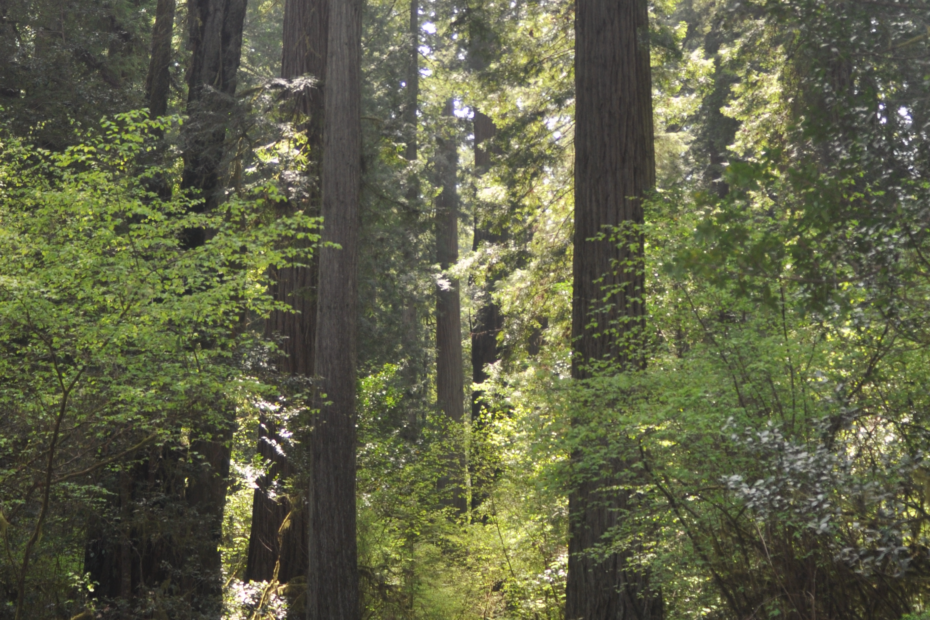Summer is rapidly approaching, which means it almost time for field work! This is both exciting and terrifying. Exciting, because it means I get to hang out outside, observe and play with bats and collect data. Terrifying, because it means there is so much to do before I start collecting data! Ordering equipment, figuring out schedules and dealing with budgets and method refinements.
A few weeks ago, I headed up to Umpqua National Forest up in Oregon, to check out a potential bat site. I had gotten a lead from an Oregon bat biologist about the historical presence of some Myotis species roosting in some old Forest Service and current ODOT buildings. Unfortunately, I was unable to gain access to the inside of the ODOT office to understand where they were actually roosting. We canvased the area, looking for signs of bat activity, mainly guano found on the walls and ground near potential roosts. There were a few promising spots, such as by the old tree coolers, and on the porch of the temporary housing for Forest Service fire fighters.
I set up a few detectors in the most likely areas, just outside the ODOT office and near what I hoped might be a potential night roost. There was a large amount of guano on the ground, but it is difficult to gauge the age of the guano, and could have just been left over from last summer. Once detectors were set up, Brad and I waited around to see where the bats would come out.
Our patience was rewarded. Just after sundown, a few bats started to creep out from the roofing of the ODOT offices. We watched until we could no longer see them, guessing that between 20 and 50 bats were roosting in the roof. They seemed small in size, which was also promising. While it is difficult to determine the species of bat when it is just flying around, some bats are just slightly larger than others.
I got lucky! Once we returned home, I loaded my recorded calls into Sonobat to determine species. The small bat I had seen coming out of the ODOT offices were my target species, Myotis yumanensis. Looking through the calls, I also got some interesting files of some tree bats, likely Lasiurus cinerus flying through. While not completely unexpected, it is always fun to see evidence of tree bats flying through.

Between checking out the site and sunset, Brad and I had some extra time, so we used the opportunity to take a short hike along the North Umpqua Trail. The trail head was right by the bat roosts, and followed along the river and through the woodlands. It was a little rainy at first, but by the end, the sun was straining to peak through the clouds.
I have to admit, as much as working at The Benbow Inn was convenient and wonderful, I am really looking forward to being in the field this summer. Last summer I felt a little like an imposter, having a room and electricity and access to TV and internet at all times. This summer will be pretty different. Both this site and my other known site in Smith River are fairly remote, out of cell phone service, surrounded by rural roads, trees, rivers and more trees. It is going to be challenging, dealing with charging and electrical equipment in the field, but I’m excited for the challenge. It may end up being a lot of traveling, but at least I’ll be doing it in some beautiful, wild and scenic places.






Thanks for your comments and image of the Indian Cave. Early in my youth I visited (in the mid-late ’50s) there with my father who had, in his 20s visited the cave, probably 1930 to 1935 or so. He related that a rattlesnake image was visible in the left most area of the cave as you looked in. Not sure if still there as your images and those of others do not show it. It was there though vague at my visit. If you may have noted blue markings, dad said those were by a USFS worker (or someone who also had a blue marker. He related that on his early visit, there were clumps of deer hair and a small bit of rawhide in the cave clearly showing Umpqua Indian activity. Best, – Dave (Denver, CO)
p.s. What is your interest in bats? At one time at our farm’s barn south of Roseburg there were hundreds of bats roosting there. Their poo still is several inches deep inside the barn. Not sure they are there now as the last time the barn was painted, the painter put a screen over the upper wall’s 2-foot opening.
Comments are closed.